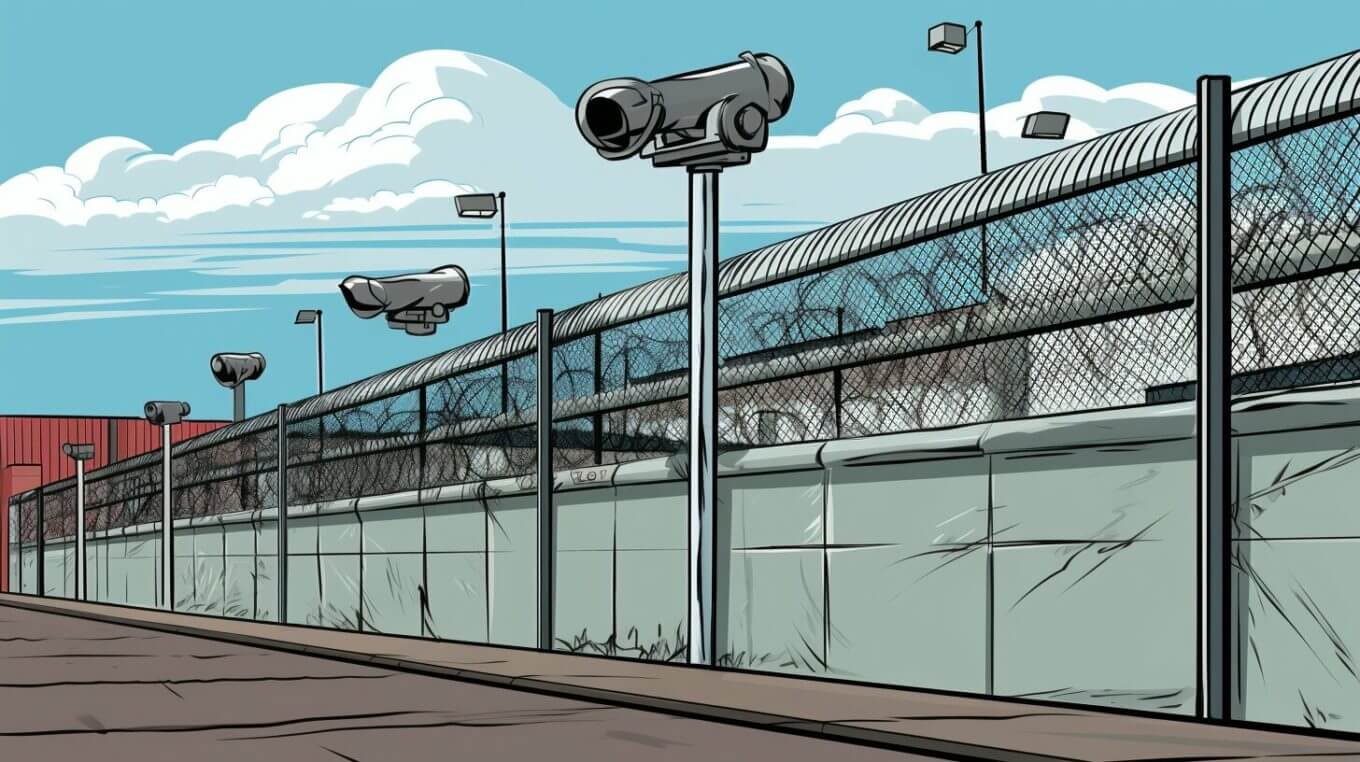As a website owner, you understand the importance of website security. A security breach on your site can result in a loss of revenue, customer trust, and damage to your brand reputation. With the continuous rise of cyber attacks, it’s crucial to take proactive measures to protect your WordPress site from potential threats.
Let’s keep your WordPress site safe and sound in this futuristic year of 2024!
| Security Threat | How to Identify | How to Prevent |
|---|---|---|
| Brute Force Attacks | Multiple failed login attempts | Limit login attempts, CAPTCHA |
| SQL Injection | Site malfunctions, suspicious logs | Use parameterized queries, update plugins |
| XSS (Cross-Site Scripting) | Altered website content | Escaping output, content sanitization |
| DDoS Attacks | Slow or unreachable site | Use CDN, rate limiting |
| Phishing | Fraudulent admin emails | Train users, use email filtering |
| Outdated Software | Notifications in dashboard | Regular updates, monitoring |
| Malware | Unusual site behavior, SEO spam | Install security plugins, frequent scans |
| Data Exposure | Data leaks, suspicious activities | Use HTTPS, data encryption |
| User Error | Accidental changes, deletions | User roles & permissions, backups |
| File Inclusion Exploits | Server errors, altered files | Disable file editing in WP, file integrity checks |
Make sure you’ve got a good security plugin and regular backups to stay on the safe side. Security’s not a one-and-done thing; it’s a lifestyle! 🛡️
Implementing security best practices will not only safeguard your website and data but also ensure the smooth functionality of your website. In this article, we will cover the essential WordPress security practices that you should implement in 2024.
Key Takeaways:
- Implementing security best practices is crucial to safeguard your WordPress site against potential threats.
- Proactive security measures ensure the smooth functionality of your website and protect your data and revenue.
The Importance of Website Security
If you’re not prioritizing website security, you’re putting your WordPress site at risk. As a website owner, it’s crucial that you implement proactive measures to protect your site from potential attacks. In this section, we’ll discuss website security tips and how you can ensure your WordPress site is safe from harm.
Protecting your WordPress site should be a top priority, especially considering a security breach’s potential risks and consequences. A hacker can gain access to your site’s sensitive information, compromise user data, and damage your site’s reputation. Not only is this costly to resolve, but it can also result in legal repercussions.
To avoid these issues, it’s essential to take website security seriously and implement the necessary protocols. This includes regularly updating your WordPress core, themes, and plugins, using strong user authentication methods, securing your plugins, and implementing web application firewalls (WAFs).
By prioritizing website security, you’ll protect your site from potential attacks and ensure your users’ trust and safety. So, take the necessary steps to secure your WordPress site today and safeguard your online presence.
Understanding WordPress Vulnerabilities
As a website owner, it’s crucial to understand the vulnerabilities that could potentially affect your WordPress site. Hackers are always looking for ways to exploit security weaknesses, and WordPress websites are particularly vulnerable to attacks.
One common vulnerability that hackers use to gain access to WordPress sites is through outdated software. This can include outdated WordPress core, themes, and plugins. Hackers can take advantage of any security flaws in outdated software that have not been patched, allowing them to gain access to your site.
Another vulnerability is poor password management. Weak passwords or easy-to-guess login credentials make it easier for hackers to gain access to your site.
One way to address these vulnerabilities is through vulnerability management. This involves identifying potential weaknesses in your website and taking proactive measures to address them before hackers can exploit them.
To effectively manage vulnerabilities, you need to understand the risk landscape and prioritize your security efforts accordingly. This may involve implementing security patches and updates, using strong passwords and two-factor authentication, restricting user access, and continuously monitoring your site for potential issues.
Implementing vulnerability management best practices is essential in securing your WordPress site and protecting it from potential attacks. By staying informed about the latest security threats and taking proactive measures to address vulnerabilities, you can reduce the risk of a security breach and ensure the safety and integrity of your website.
Implementing Strong User Authentication
Securing your WordPress website should be a top priority, and implementing strong user authentication is one of the most essential security tips for WordPress. By ensuring that only authorized users can access your site, you can prevent potential attacks and protect sensitive information.
Here are some essential tips for securing your WordPress site:
- Use strong passwords for all user accounts. Passwords should be at least 12 characters long and include a combination of upper- and lowercase letters, numbers, and symbols.
- Enable two-factor authentication. This adds an extra layer of security by requiring users to enter a verification code in addition to their password.
- Limit login attempts. By restricting the number of login attempts, you can prevent automated brute-force attacks by guessing your login credentials.
By following these simple steps, you can significantly enhance the security of your WordPress website and protect it from potential threats.
Securing Your WordPress Plugins
If you’re using WordPress, plugins are probably essential to your website’s functionality. However, it’s important to keep in mind that plugins can also be a vulnerability if not secured properly. By implementing these recommended security measures, you can ensure the safety of your WordPress site.
Keep Your Plugins Up-to-Date
One of the most crucial steps to secure your WordPress plugins is to update them. Plugin developers frequently release new versions that fix known vulnerabilities and improve overall security. Failure to update your plugins can leave your site open to attacks.
It’s also important to delete any plugins you no longer use. Having outdated or unused plugins can give hackers an entry point to your site’s data.
Select Reputable Plugins
When selecting a plugin, it’s important to make sure it comes from a reputable source. Be wary of downloading plugins from unknown sources or unfamiliar developers, as they may contain malicious code that can compromise your site.
| Tip | Check the plugin’s reviews and ratings in the WordPress Plugin Directory before downloading it. |
|---|
Monitor Vulnerabilities
It’s important to be aware of any known vulnerabilities in your plugins. Sign up for security alerts and notifications from the plugin developers to stay informed on any new vulnerabilities. Additionally, you can use tools like WPScan or Vulnerability Database to scan for vulnerabilities in your plugins.
Disable Unnecessary Features
Plugins often come with a wide range of features, some of which may not be necessary for your site’s functionality. By disabling any unnecessary features, you reduce the potential for vulnerabilities.
It’s also a good idea to limit administrative privileges for the plugin to the users who actually require them. This will help ensure that only authorized users can change their plugin settings.
By following these simple steps, you can help to secure your WordPress plugins and prevent potential security breaches. Remember to keep your plugins up-to-date, select reputable plugins, monitor vulnerabilities, disable unnecessary features, and limit administrative privileges. By prioritizing the security of your WordPress site, you can protect your site’s data and reputation.
Regular Updates and Backups
Keeping your WordPress core, themes, and plugins up to date is one of the most crucial WordPress security measures you can take. WordPress frequently releases updates to patch security vulnerabilities and fix bugs. Leaving these updates unaddressed can leave your website vulnerable to security breaches.
In addition to updates, regular backups of your website are essential for minimizing the damage in case of a security breach. Backups allow you to restore your website to its previous state before the breach occurred. By frequently backing up your website, you can prevent the loss of critical information and minimize downtime.
Implementing Web Application Firewalls
When it comes to securing your WordPress website, implementing a web application firewall (WAF) is one of the best practices you can adopt. A WAF acts as a filter between your website and the internet, monitoring and blocking malicious traffic.
By analyzing incoming traffic and identifying malicious attempts to exploit vulnerabilities, a WAF adds an extra layer of protection to your site. In simple terms, it is like having a bouncer guarding the entrance to your website.
WAFs can detect and prevent attacks such as SQL injections, cross-site scripting (XSS), and distributed denial-of-service (DDoS) attacks. By keeping your website safe from such attacks, you are protecting your data and visitors’ information.
There are several types of WAFs available, including cloud-based and server-based options. While cloud-based WAFs are easier to set up and manage, server-based WAFs offer more control and customization options.
When selecting a WAF, make sure it provides real-time monitoring and proactive defense against new and emerging threats. Some of the popular options include Sucuri, AWS WAF, and Cloudflare.
It is important to note that a WAF is not a silver bullet solution and should be used with other security measures such as strong passwords, limited login attempts, and regular updates. However, implementing a WAF is essential in securing your WordPress website and protecting it against common threats.
Ongoing Monitoring and Incident Response
Securing your WordPress website is an ongoing process that requires consistent monitoring and incident response. Neglecting website security or assuming that your previous security measures are sufficient can put your website at risk.
Continuous Monitoring
To secure your WordPress website, you must stay vigilant for potential security threats. Regularly scanning for vulnerabilities and tracking any unusual activity can help you detect and prevent potential attacks.
You can monitor your website using security plugins that scan for malware, vulnerabilities, and suspicious activity. These plugins can provide alerts if any suspicious activity occurs on your website.
Incident Response Plan
Even with the best security measures in place, a security breach is always risky. Having an effective incident response plan can help you minimize damage and get your website back up and running as soon as possible.
Your incident response plan should include a step-by-step guide on handling a security breach. This plan should include details on who to contact, how to notify your users, and how to recover your website.
Regularly testing your incident response plan can help you identify any weaknesses in your strategy and improve your response time.
Stay Vigilant
Remember, website security is an ongoing process that requires dedication and commitment. Always stay vigilant for potential security threats and be prepared to take action when necessary.
By implementing best practices, such as continuous monitoring, incident response planning, and staying up to date with security updates, you can protect your WordPress website from potential attacks and ensure the safety of your users’ data.

